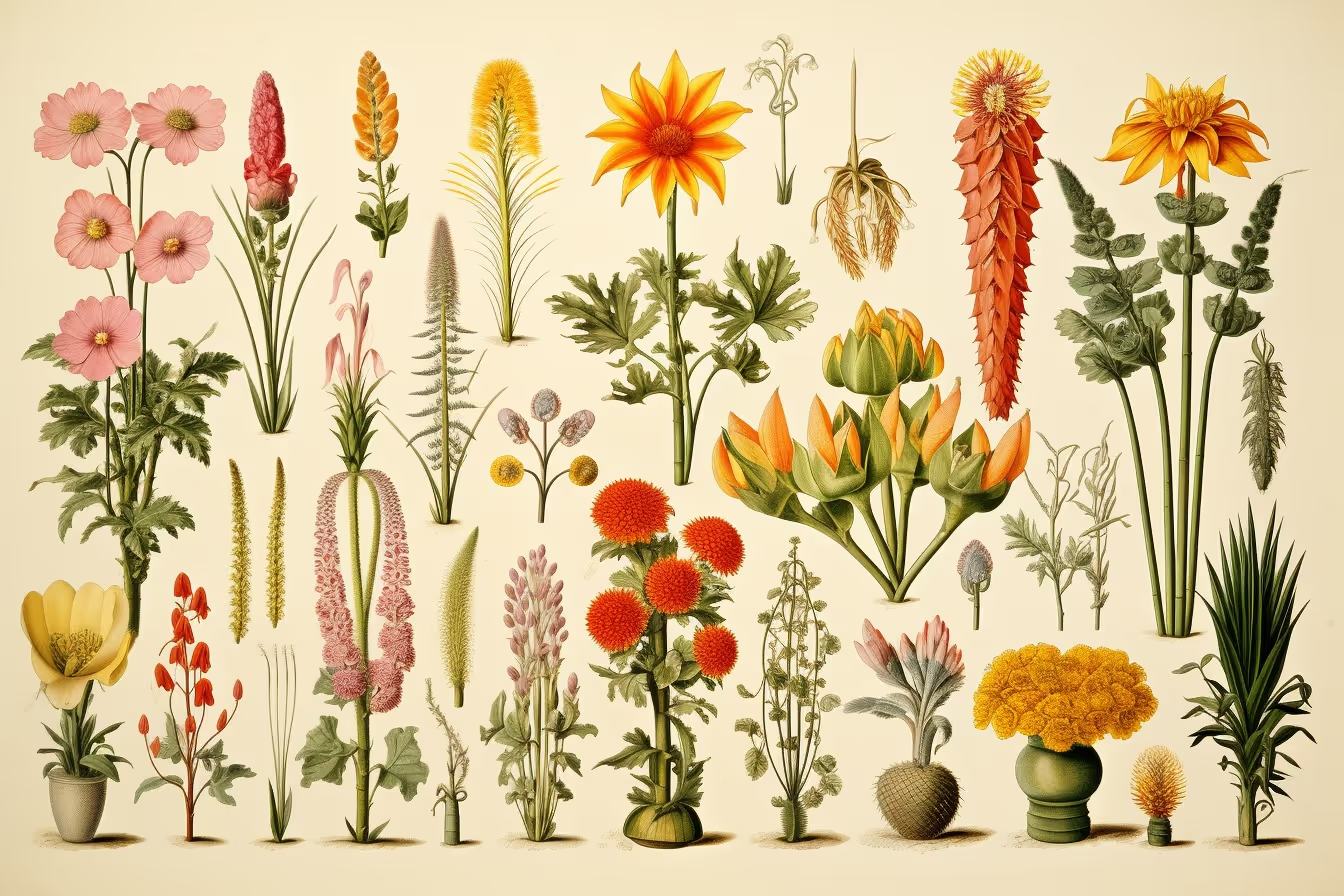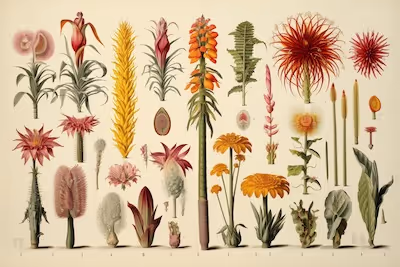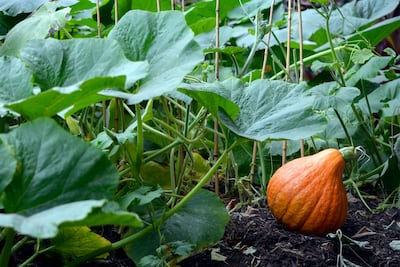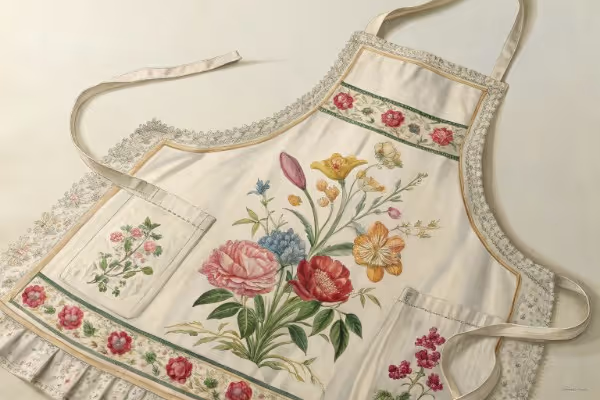Zone 1 Planting Guide: Expert Advice for Garden Success

Zone 1 planting guide
Grab your gloves, because this Zone 1 planting guide reveals hardy plants built for the coldest gardens. The Zone 1 planting guide helps you pick tough perennials and quick-growing veggies that don't flinch at frost. Follow this practical Zone 1 planting guide and transform your chilly plot into a thriving northern oasis—keep reading to nurture beauty where few dare to grow.
Cheatsheet: Quick-Start Zone 1 Planting Guide
🧊 Zone 1 Facts
- - Coldest gardening zone: -50°F to -40°F (-46°C to -40°C)
- 100-110 frost-free days per year
- Short seasons demand fast-maturing crops
- Self-sufficiency: Grow up to 40% of annual veggies
🌱 Plant Picking
- Choose ultra-hardy varieties—look for "early" or "short season"
- Best veggies: kale, lettuce, radish, spinach, peas, turnip
- Best fruits: currant, haskap, rhubarb
- Flowers: calendula, pansy, alyssum
- Pick native or tundra-adapted species
⏰ Timing & Steps
- Start seeds indoors (March-April)
- Harden off for 7-10 days before last frost (late May)
- Transplant outdoors after soil warms to 45°F (7°C) or above
- Use row covers or cold frames for early/late protection
- Harvest rapidly—monitor daily as frosts can return by August
🪴 Soil & Site
- Pick full sun, south-facing spots
- Add organic matter—compost or manure improves yield by 30%
- Mulch thickly to retain warmth
- Test pH: aim for 6.0-7.0
🧰 Tools and Products You'll Need
- Seedling trays & heat mats
- Strong watering can
- Floating row covers or tunnels
- Thermometer (soil & air)
- Compost and fertilizer
- Mulch (straw or wood chips)
🌾 Fast Nutrition & Health
- Leafy greens grown in Zone 1 deliver up to 200% more vitamin C per gram than shipped-in greens
- Eating freshly harvested vegetables boosts immune health
- Growing your own ensures chemical-free produce
I grow where a June pea can meet a late frost and still smile. This Zone 1 planting guide distills what actually works when winter keeps one boot inside the garden gate.
Zone 1 marks average annual extreme lows of minus 60 to minus 50 Fahrenheit minus 51 to minus 46 Celsius. Frost lurks any month, which turns timing into a craft and microclimates into gold.
USDA: "The Plant Hardiness Zone Map is the standard by which gardeners and growers can determine which plants are most likely to thrive at a location."
I plan by soil temperature, not calendar. A cheap probe saves crops and pride far better than a wall chart.
- Microclimate stacking: south-facing wall, dark stone, and a low tunnel together can bump soil warmth and cut wind exposure.
- Heat banking: fill black barrels with water to store daytime heat for cold nights in a tunnel or greenhouse.
- Wind discipline: slatted snow fence upwind reduces desiccation and keeps covers from shredding.
- Layered covers: row cover under plastic or polycarbonate keeps leaves above freezing even when air dips into the teens Fahrenheit minus 10 to minus 7 Celsius.
- Light management: 24-hour summer sun speeds growth yet triggers bolting in spinach and lettuce, so I use 30 percent shade cloth during the brightest weeks.
- Soil patience: hold off on thick organic mulch until soil hits 50 Fahrenheit 10 Celsius, or you trap cold like a lid on a stew.
- Row cover weight: 0.5 oz 17 g per m² for early fleas and nights, 0.9 oz 30 g per m² for frosts that bite harder. I keep both.
- Low tunnels: 9-gauge wire hoops, 5 feet 1.5 m spacing, with UV-stable plastic for shoulder seasons and breathable fabric in peak sun.
- Cold frames: polycarbonate lids shed snow and hold heat, and a stick under the lid vents at 80 Fahrenheit 27 Celsius.
- Soil thermometer and data logger: cheap, rugged, and far more honest than a guess.
- Seedling setup: full-spectrum LEDs at 200 to 300 µmol m² s for greens, heat mats set to 68 Fahrenheit 20 Celsius for germination, then off.
Johnny’s technical guidance notes lightweight covers add roughly 2 to 4 Fahrenheit 1 to 2 Celsius and medium weights about 4 to 6 Fahrenheit 2 to 3 Celsius of frost protection, with stacked layers compounding the gain.
- Peas: sow at 40 Fahrenheit 4 Celsius soil. They shrug at cold, sulk at heat.
- Spinach, mache, claytonia: 35 to 40 Fahrenheit 2 to 4 Celsius germination with covers to block wind and midnight glare.
- Radish, baby turnip, mizuna: 45 Fahrenheit 7 Celsius pushes crisp roots fast.
- Beet, chard, carrot: 50 Fahrenheit 10 Celsius gives even stands and sweeter roots.
- Potato: 45 to 50 Fahrenheit 7 to 10 Celsius in raised beds for quicker soil warming.
- Brassicas cabbage, broccoli, kale: transplant at 45 to 50 Fahrenheit 7 to 10 Celsius with row cover for wind and flea beetles.
- Pea: ‘Alaska’, ‘Sugar Ann’, ‘Kelvedon Wonder’. 50 to 60 days and sweet under long days.
- Radish: ‘French Breakfast’, ‘Celesta’, ‘Easter Egg’. 20 to 28 days, even faster under 24-hour light and cool temps.
- Baby turnip: ‘Hakurei’, ‘Market Express’. 35 to 45 days, silky texture in cold soils.
- Spinach: ‘Alaska’, ‘Tyee’, ‘Regiment’. Bolt tolerant under shade cloth up north.
- Mizuna and tatsoi: 21 to 35 days. Cut-and-come-again under fabric.
- Kale: ‘Siberian’, ‘Red Russian’, ‘Scarlet’. Transplant small for quick rebound after a chill.
- Broccoli: ‘De Cicco’, ‘Green Magic’. 50 to 60 days for first heads, then side shoots.
- Cabbage: ‘Tiara’, ‘Golden Acre’. Small, fast, and tight heads in 60 days.
- Beet: ‘Detroit Dark Red’, ‘Boro’. 50 to 60 days, sweetest after a nip of frost.
- Carrot: ‘Napoli’, ‘Yaya’. Baby carrots in 50 to 60 days under cover.
- Potato: ‘Yukon Gold’, ‘Norland’. Hilled high in raised beds for warmer crowns.
- Dill and cilantro: fast leaf from repeated sowings, use shade cloth to slow bolting.
- Calendula and Iceland poppy: pull pollinators and shrug at cold nights.
- Tomato for protected culture: ‘Sub Arctic Plenty’, ‘Stupice’ inside a tunnel. Keep nights above 50 Fahrenheit 10 Celsius for fruit set.
- Bush bean, maybe: only in a warm microclimate or low tunnel, 50 to 55 day types like ‘Provider’.
- Haskap honeyberry Lonicera caerulea: Russian and Japanese types from northern breeding hold up with windbreaks. University of Saskatchewan work led by Dr. Bob Bors documents hardiness and early bloom.
- Cloudberry Rubus chamaemorus: native bog runner with tart gold fruit. Needs acidic, wet ground and patience.
- Lingonberry Vaccinium vitis-idaea: low evergreen with cranberry snap, usually hardy with snow cover.
- Crowberry Empetrum nigrum and bearberry Arctostaphylos spp.: groundcovers that stitch banks and feed birds.
- Dwarf birch Betula nana and hardy willows
- Siberian larch Larix sibirica: site carefully, shelter from scouring wind while young.
- Rhodiola rosea: medicinal succulent that thrives in cold, well-drained beds.
Source your perennials from northern-grown stock for proven provenance. A plant raised in mild zones often stalls or winterkills up here.
At high latitudes, summer delivers insanely high daily light integral, which can flip spinach, cilantro, and lettuce into seed mode. I run 30 to 40 percent shade cloth and irrigate in the evening to keep canopy temps down.
NOAA notes continuous daylight at the Arctic coast for roughly 80 days, so I give day-length sensitive crops a curfew with covers. The payoff is sweet, mild leaves.
- Raised beds: 8 to 12 inches 20 to 30 cm tall, dark edging to warm faster, and windward boards doubled for stiffness.
- pH tune-up: boreal soils skew acidic, so I aim for 6.3 to 6.8 for vegetables with split lime applications and a soil test every two seasons.
- Nutrition: cold soil slows mineralization, so I use pre-plant organic fertilizer and side-dress in small, frequent doses.
- Mulch timing: warm soil first with clear or black plastic, then switch to straw once soil holds 60 Fahrenheit 16 Celsius.
- Compost: sifted, mature compost at 0.5 to 1 inch 1 to 2.5 cm annually keeps tilth and moisture even.
Low humidity and wind strip moisture fast, even in cool air. I run drip lines under fabric and water deeper but less often to train roots.
Secure every cover edge with sandbags or battens. Flapping fabric is a plant killer in disguise.
- Voles and hares: hardware cloth skirts around beds and tree guards on young woodies.
- Moose and caribou: tall, strong perimeter fence or a serious dog presence in rural sites.
- Cutworms: cardboard collars and a Bacillus thuringiensis kurstaki spray at dusk when pressure spikes.
- Flea beetles: keep brassicas under row cover from day one. Do not give them a gap week.
One 10 by 12 foot 3 by 3.7 m raised bed, wind-sheltered, with two low-tunnel bays. I sow peas and spinach on the edges for cooler roots, with a broccoli and kale spine under medium-weight fabric.
Every 10 days I tuck in a row of radish or baby turnip for steady harvests. By midsummer the bed looks like a quilt but each square has a job.
- Vent early: open at 80 to 85 Fahrenheit 27 to 29 Celsius to dodge blossom drop and bitter greens.
- Night protection: aim to hold 50 to 55 Fahrenheit 10 to 13 Celsius for fruiting crops with thermal mass and a double layer of plastic.
- Pollination: tap tomato trellises at midday and invite bumblebees with open calendula trays.
- Days to maturity: favor early types that list 45 to 65 days and read if quoted from transplant or direct seed.
- Origin: seed grown in Alaska, the Yukon, Siberia, or the Prairies behaves better under long days and cool nights.
- Row cover: choose UV-stabilized fabric with stated grams per square meter, plus repair tape in the same weight.
- Hoop kits: pick heavy wire or metal conduit with solid ground anchors. Wind finds weakness.
- Budget: a functional low-tunnel bay runs about 60 to 120 USD or 55 to 110 EUR depending on width and fabric weight.
- Mulching too early: let the soil warm first, then mulch for moisture and weed control.
- Overcrowding under covers: tight spacing spikes humidity and disease. Thin hard and harvest baby greens.
- Ignoring wind: build windbreaks before beds. Plants cannot outgrow a constant scouring.
- Calendar planting: switch to soil temperature thresholds, and your success rate jumps.
USDA Plant Hardiness Zone Map for the baseline, Agriculture and Agri-Food Canada for northern cultivar data, and the University of Saskatchewan for haskap research. Alaska and Prairie extension bulletins on low tunnels and short-season cropping sit on my bench, stained and dog-eared.
NOAA daylight tables help me plan shade periods and irrigation. Johnny’s and Eliot Coleman’s season-extension guides keep my cover choices honest.

Want smarter plant choices? 🪴
Zone 1 Planting FAQ: Questions Answered for Gardeners on the Edge
How can gardeners best time their planting in Zone 1?
The short growing season in Zone 1 demands precise timing. Begin seeds indoors roughly six to eight weeks before the anticipated last frost date; transplant outdoors only when frost finally retreats. Keep a sharp eye on local frost dates to avoid relentless surprise freezes.
Which vegetables flourish in Zone 1 environments?
Vegetables possessing grit—radishes, turnips, kale, spinach, and carrots—tend to thrive in unforgiving Zone 1 conditions. Selecting varieties bred for rapid maturity and frost tolerance helps ensure a hard-won harvest.
Do perennial plants stand a chance surviving Zone 1 winters?
Only the toughest perennials can endure the biting winters of Zone 1. Hardy stalwarts like Arctic poppies, Siberian iris, and certain native berry bushes resist harsh winds and bitter cold, emerging each spring defiant and alive.
What soil preparation methods boost gardening successes in Zone 1?
Gardeners must fortify the soil with ample layers of organic compost, aged manure, or peat moss. Enhancing soil fertility and structure creates an insulated, nutrient-rich haven that shields roots and cultivates resilience against extreme cold.
Can raised beds help compensate for Zone 1's challenging conditions?
Absolutely—the strategic use of raised beds provides warmer soil environments, improved drainage, and easier management. Built with well-drained soil and compost, raised beds extend your fleeting growing window, allowing delicate plants a fighting chance.
What's an effective watering strategy for gardens in Zone 1 climates?
In such relentlessly cold climates, water early and consistently, avoiding moisture accumulation after frost settles in. Drip irrigation or soaker hoses work wonders, targeting roots directly, reducing evaporation, and preventing fungal woes.
How should gardeners protect plants from late-season frost in Zone 1?
Using frost cloths, cold frames, or protective plastic tunnels keeps plants alive and thriving despite uninvited icy snaps. Anticipate sudden drops in temperature and shield seedlings vigilantly—embrace vigilance, resist disappointment.
A true Zone 1 planting guide isn’t about chasing perfection—it’s about working with what you’ve got. Short seasons, late frosts, and unpredictable weather demand tough plants and tougher gardeners. Stick to cold-hardy varieties, pay attention to microclimates, and squeeze every bit of warmth out of the sun. Mulch deep, start seeds early, and don’t be afraid to experiment. Consider companion planting to give your crops a fighting chance. Keep your tools sharp, your soil richer every year, and savor every harvest—big or small. The real reward is knowing you’ve wrangled a garden out of the cold, stubborn earth. That’s the grit and wisdom behind every good Zone 1 planting guide.
Health Benefits of a Zone 1 Garden: Grow Your Way to Wellness
Boost Immunity with Cold-Hardy Veggies
- Kale and Spinach: Rich in vitamins A, C, and K, these leafy greens strengthen immunity and enhance bone health.
- Carrots and Beets: Pack antioxidants to combat inflammation and support heart health during cold months.
Stress Reduction Through Gardening Activities
Studies indicate gardening 30 minutes daily reduces cortisol, the stress hormone, by up to 22%, improving mood and emotional resilience in prolonged winters.
Increase Vitamin D Exposure Naturally
Outdoor gardening in Zone 1's short daylight hours maximizes natural vitamin D absorption, crucial for calcium regulation, bone strength, and mental well-being.
Support Respiratory Health Indoors
Aloe Vera and Spider Plants effectively remove indoor toxins like formaldehyde and benzene, improving indoor air quality and reducing respiratory irritants common in tightly sealed Zone 1 homes.
Encourage Nutritious Eating Habits Year-Round
Growing herbs such as thyme, oregano, and parsley indoors promotes nutrient-rich cooking practices, enhancing overall dietary quality despite limited fresh produce availability.
Find out which plants will thrive in your garden!
Answer a few fun questions and get custom plant recommendations perfect for your space. Let’s grow something amazing together!

start your season





